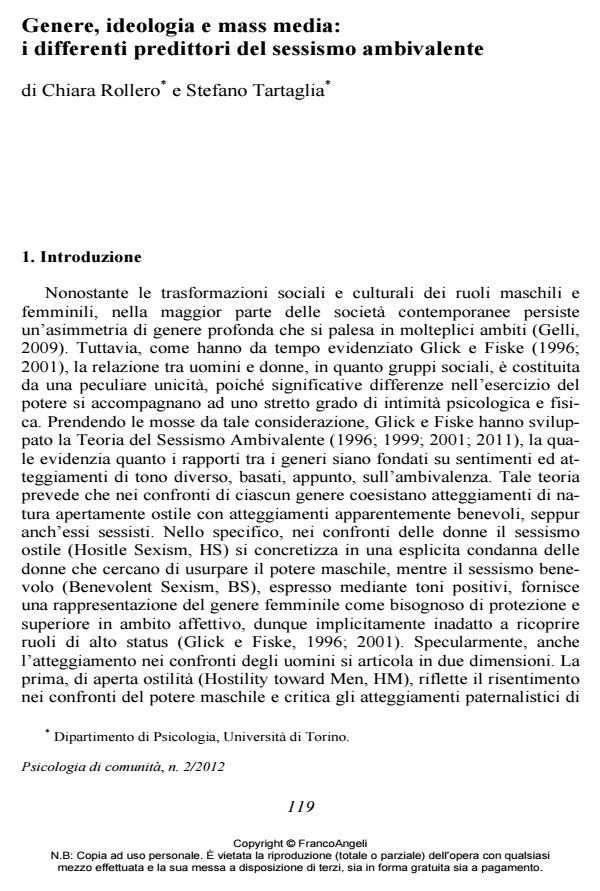Gender, ideology, and mass media: The different predictors of Ambivalent Sexism
Journal title PSICOLOGIA DI COMUNITA’
Author/s Chiara Rollero, Stefano Tartaglia
Publishing Year 2013 Issue 2012/2
Language Italian Pages 10 P. 119-128 File size 433 KB
DOI 10.3280/PSC2012-002011
DOI is like a bar code for intellectual property: to have more infomation
click here
Below, you can see the article first page
If you want to buy this article in PDF format, you can do it, following the instructions to buy download credits

FrancoAngeli is member of Publishers International Linking Association, Inc (PILA), a not-for-profit association which run the CrossRef service enabling links to and from online scholarly content.
Ambivalent Sexism Theory, proposed by Glick & Fiske (1996; 2011), posits that sexist attitudes encompass considerable ambivalence on the part of each sex toward the other. Such theory argues four dimensions of sexism: benevolent (BS) and hostile (HS) toward women, as well as benevolent (BM) and hostile (HM) toward men. Present study addresses the question of which factors mainly affect each of these dimensions. Male and female participants (N = 253) were given a questionnaire aimed at comparing the effects of different variables through four regression models. Respondents’ gender and ideological characteristics predicted HS, BM, and HM; watching television influences benevolent attitudes (both BS and BM), whereas the use of Internet increases HS.
Keywords: Ambivalent Sexism Theory, gender stereotypes, Social Dominance Orientation, Mass Media, Multiple Regression Models.
Chiara Rollero, Stefano Tartaglia, Genere, ideologia e mass media: i differenti predittori del sessismo ambivalente in "PSICOLOGIA DI COMUNITA’" 2/2012, pp 119-128, DOI: 10.3280/PSC2012-002011